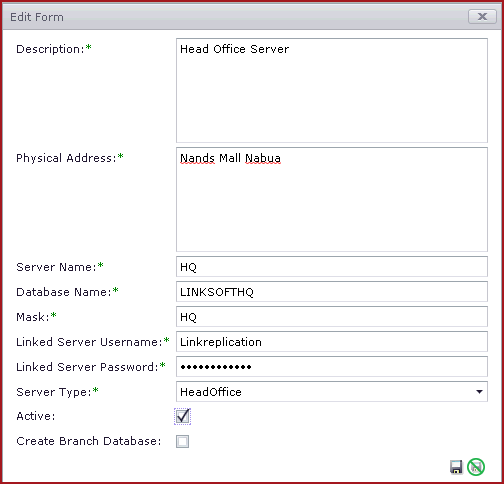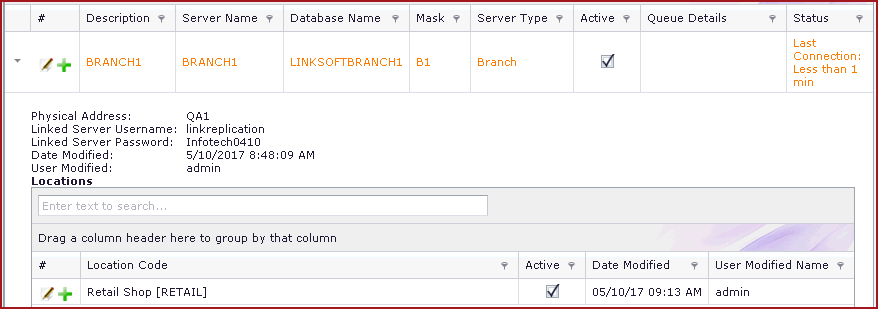Overview
Servers are used to define a SQL
Database Server.
The following functions are
available:
-
Defining a server
-
View Server Status
-
Steps to define a server:
-
-
Description - Enter a description to
identify the server
-
Physical Address - This is the address
where the server is located
-
Server Name
- Name of server where the database is hosted. E.g HQ, Branch A,
Branch B, etc. The server name must uniquely identify the server in the
replication setup.
-
Database Name - Database name to be
used with the Server Name.
-
Mask - This is a two character
unique identifier for all transactions created on this database. Please make
sure that you use a unique two digit identifier for each database
server.
-
Server Type - Tag a server as
either "Head Office" or "Branch". There should be only 1 server tagged to
"Head Office" in the entire replication network. All other servers should be
tagged as "Branch".
-
Active - Tick this flag if the
server is available for replication
-
-
Locations - Locations are used
to restrict transactional data flowed from Head Office to Branches. These
are configured in
Replication
Rules
. Refer to Figure 2.
-
Location Code - Add the locations
for the server.
-
Active - Tick this flag to make the
location active.
View Server Status
-
Queue Details - Shows the number of
records at different stages in replication.
-
Status - Shows last connection time.
Rules -
The rules tab shows a list of replication rules that is active for the
server.
Figure 1 : Replication Server

Figure 2: Locations

 Link Technologies - LinkSOFT Documentation
Link Technologies - LinkSOFT Documentation  Link Technologies - LinkSOFT Documentation
Link Technologies - LinkSOFT Documentation 
